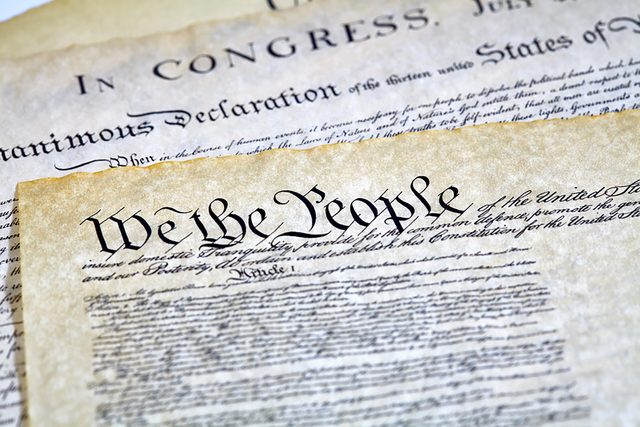There Were Originally 12 Amendments to the Constitution. What Happened to the Other Two?
Updated: Jul. 19, 2021
James Madison wrote a lot of them, some just didn't make the cut.
 If James Madison had his way, the First Amendment to the United States Constitution would not have been about free speech or freedom of religion. Instead, it would have regulated the makeup of the House of Representatives.
If James Madison had his way, the First Amendment to the United States Constitution would not have been about free speech or freedom of religion. Instead, it would have regulated the makeup of the House of Representatives.
Let’s step back a minute. In 1789, the constitution had just been ratified and Madison was on a roll, writing one amendment after another until he reached 20 amendments, which, he hoped, would become the Bill of Rights. The House of Representatives knocked that number down to 17, and the senate took an axe to five more. The surviving 12 amendments were sent to the 13 states for ratification. Two amendments—the first two!—did not get the requisite approval by at least 10 states. If you’re already fascinated, you don’t want to miss these other incredible facts about the United States.
The “original” first amendment would have established how members of the House of Representatives would be apportioned. Madison’s idea was that there would be one representative for every 30,000 civilians and that the number of representatives would grow from its original 65 members as the population expanded. The states thought otherwise, and although the number of representatives did swell due to the addition of new states and following each census up until 1920, the Permanent Apportionment Act of 1929 set the number of representatives at 435, which is where it stands today.
As far as those Representatives were concerned, the original “second” amendment might have been the more important. That one concerned their income. The amendment forbade Congress from giving itself a pay raise. Instead, the only way Congress could hike their salary would be to approve an increase for the next congressional session, then hope they got reelected. Interestingly, in 1982, a University student named Gregory Watson was conducting research for a government class when he stumbled upon a copy of the amendment and realized that it was technically “alive,” says John Buescher in teachinghistory.org. That was because there was no language “in it about a window of time in which it had to gain the needed number of state ratifications.” Watson led the charge to ratify the legislation, and in 1992 it became the 27th—and last—amendment to the United States Constitution. Next, check out the history lessons your teacher probably lied to you about.